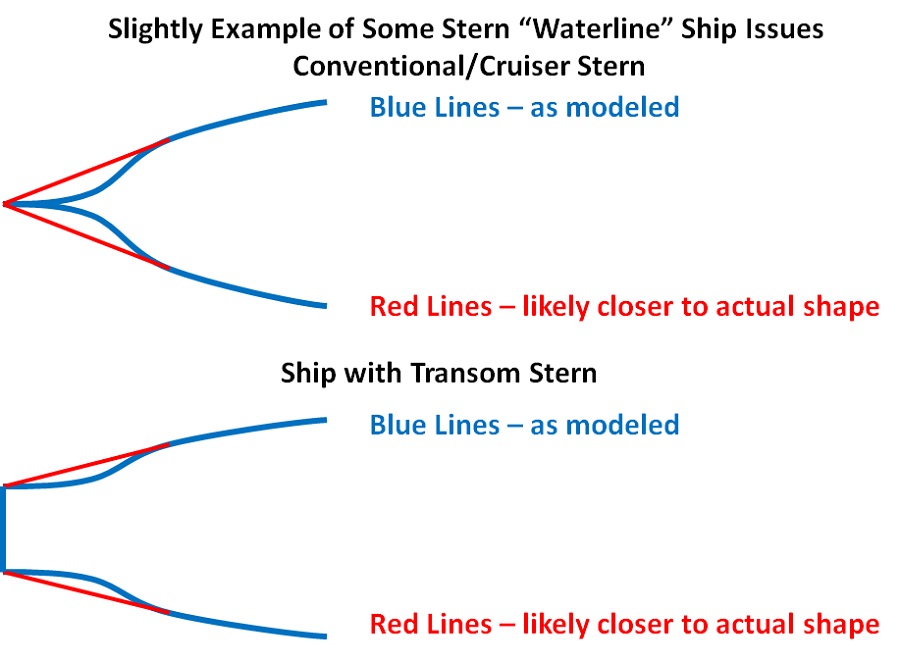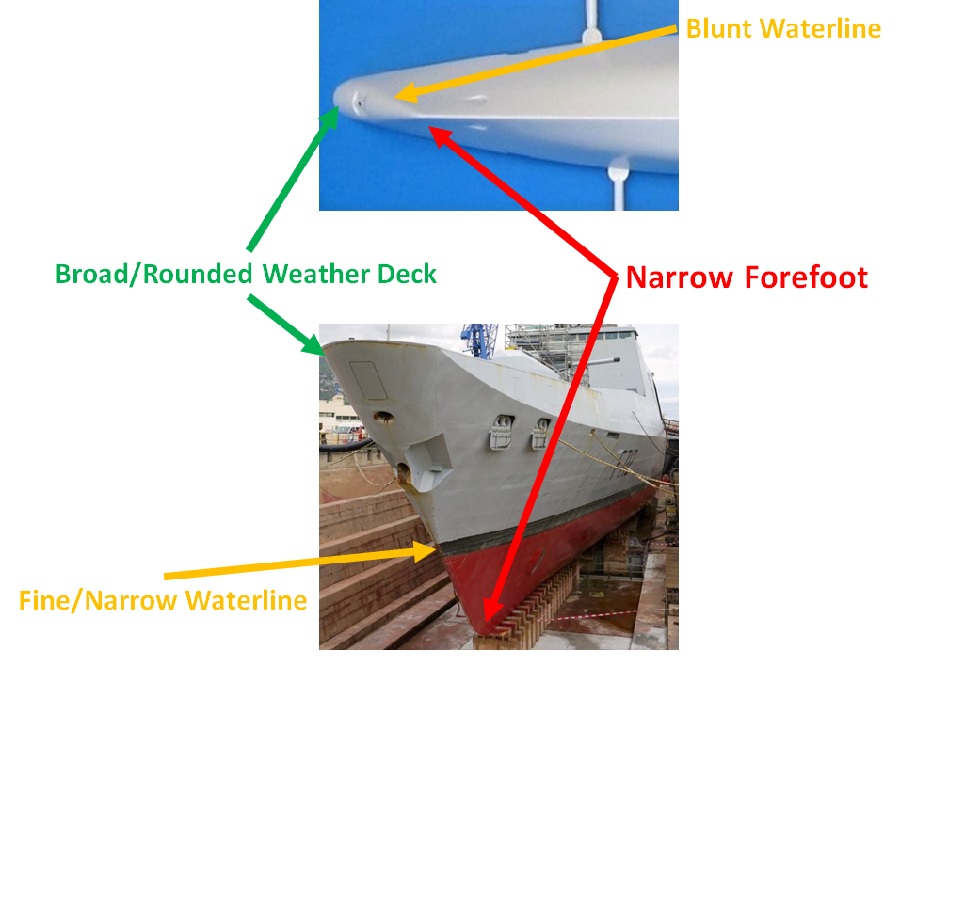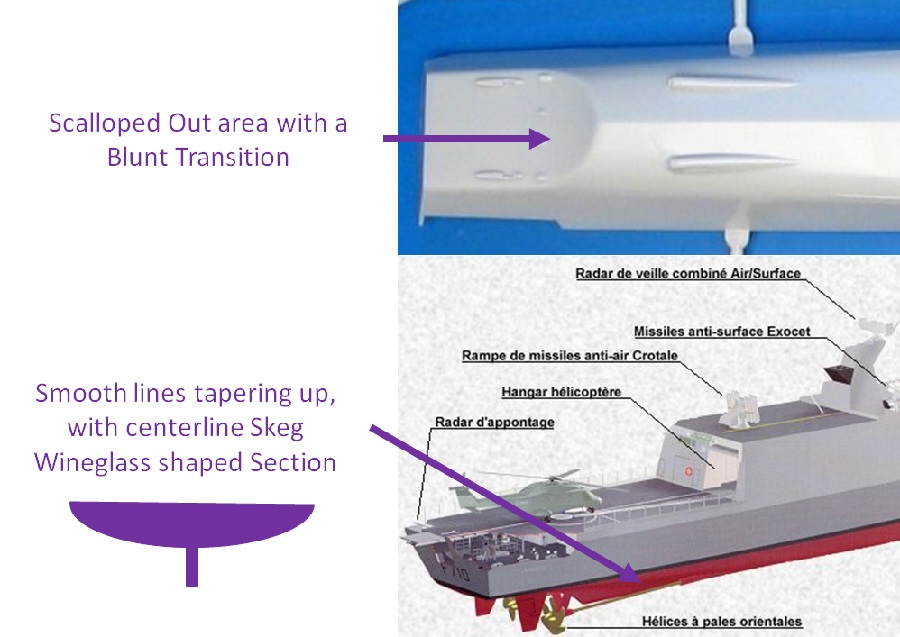Hi,
That not a bad isea and with a little care and understanding of what typical underwater hulls normally look like you could probably come up with a very reasonable approximation.
One smallissue that I have found on some full hull kits, is in way of the stern. Usually it is vary minor but sometimes, like on the Airfix HMS Tiger cruiser model and the Aurora USS Iwo Jima kit it appears that they taper in the hull just a little too much right brefore the stern, so that the design waterline ends up with a small "inflection"in it right before the stern, or even a "small tail shape" like shown below.

Usually, the inflection is so small on most models where I have noticed it that you can ignore it, and probably no one will notice, though you can also probably fill the inflection in with putty if you want to. And if you are making the underwater hull from scratch it is ususally pretty simple to "fill in" the shapes there just a little to make the waterlines a little more (hopefully) "realistic" looking (I believe).
On the topice of models with potentially unrealistic underwater hulls, other than the Revell Flat Bottom models that you mentioned, the most unrealistic under water hull that I have seen on a kit recently is on the Heller 1/400 scale La Fayette class frigate model. In profile and from the stern the shapes look reasonable but from any other angle you can readily see issues. I don't know if they were in a rush to get the ship kitted (i heard another company was working on a reisn kits at the time but cancalled their plans when Heeler came out with their injection model kit.
If you look at the bow, on the La Fayette, like most other concentional displacement hulls, the waterline will come to a fairly narrow shape before being rounded off (or more correctly I guess, tapered off in a very small elliptical shape). On the Heller Kit though they do a fairly straight tapering of the bow shape from its fairly rounded deck down to the forefoot, leaving the "design waterline" end being very blunt, as shown below.

Near the stern the mold makers appear to have gotten the profile correct (showing a skeg) bu they appear to have just kind of "scalloped out" the rest of the stern aft of that, so that instead of a "skeg" they underwater hull is just very wide at one point and then just gets chopped away, as shown below. From information that I have seen on the La Fayette as well as other similar ships the "sections aft here should really look more like a "wine glass" with a broad upper section and a narrow lower "stem"/skeg.

Sorry, hope I didn't derail the intent of your post.
Pat